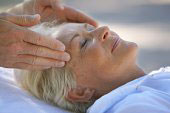Exeter Osteopath - Understanding Osteopathy in the UK
 Exeter
Osteopath
is a UK Web site dedicated to improving understanding of
osteopathy as it is practiced in the United Kingdom.
Osteopathic treatment has become more and more popular over
recent years. Many people still only visit an osteopath
when they are suffering with back pain, unaware of
the wide
range of treatments and health giving possibilities that
Osteopathic medicine can offer.
Exeter
Osteopath
is a UK Web site dedicated to improving understanding of
osteopathy as it is practiced in the United Kingdom.
Osteopathic treatment has become more and more popular over
recent years. Many people still only visit an osteopath
when they are suffering with back pain, unaware of
the wide
range of treatments and health giving possibilities that
Osteopathic medicine can offer.
On the Exeter Osteopath web site you will discover the varied range of Osteopathic techniques that your osteopath is trained to perform, and the positive ways that they can be used in improving your health and well being.
What is Osteopathy?
- Osteopathy uses the body's own healing ability
-
Osteopathy is a way of diagnosing and treating that uses the body's innate and powerful healing resources to restore health and function to joints and tissues. This is achieved by identifying areas of restriction in bony structures and surrounding flesh. These restrictions (often felt as a stiffness in the back, or soreness in a joint) are known to inhibit proper circulation which leads to discomfort and eventually to disease. Freeing the restrictions through skilled manipulation allows the body to circulate fresh fluids with nutrition and healing components that restore health to the affected area, carrying away the toxins and refreshing the tissues.
- Osteopathy takes account of the whole body
A healthy body is one that you don't notice as you glide through life comfortably accomplishing all those things that you need to, and would like to do. The body is made up of many different parts, like the heart and circulation, the bones and muscles and the digestive system (your stomach etc). When these are all working well together you feel great. This is because the systems are supporting one another. The digestive system absorbs energy from your food, which is carried to the muscles via the arteries. The bones and muscles provide a supporting framework for the arteries (along with many other important things), giving them room to flow freely. The stomach and intestines are also supported by the skeleton and the surrounding tissues, allowing free passage of food through your body and the efficient exiting of waste.
- Osteopathy treats the source of the problem
-
When one part goes wrong then the problem will often manifest itself in another part of the body. For example, a headache can be caused by poor circulation of blood to areas of the brain. This can be the result of tight muscles around the shoulders and neck that have caused altered posture and led to a restriction of blood flow from the heart . By relaxing the muscles and adjusting the posture an Osteopath allows the patient's body to let the blood flow freely again, restoring the correct function to the brain.
This approach can be applied to most of the conditions that are suffered as part of modern living. The ideal body is that of a healthy child, naturally poised and bursting with energy, with all parts working in harmony. Osteopathic techniques applied with thought and knowledge can have profound effects in restoring this ideal equilibrium.
The
Modern Osteopath
- Training
-
In the UK Osteopaths follow a rigorous 4 year education that provides a deep understanding of human anatomy and physiology, of pathologies and a thorough training in a variety of osteopathic techniques. The final 2 years of the degree are spent in clinical practice where patient safety becomes second nature as the trainee Osteopath applies his or her understanding and techniques to restoring health to their patients. All UK Osteopaths are registered with GOsc (The General Osteopathic Council). GOsc certification means that your osteopath has been certified by the Government approved body as a safe and highly competent practitioner of Osteopathy in the UK.
- Philosophy
-
The Osteopath aims to serve the patient. His or her job is to maximise the health potential of the body.
